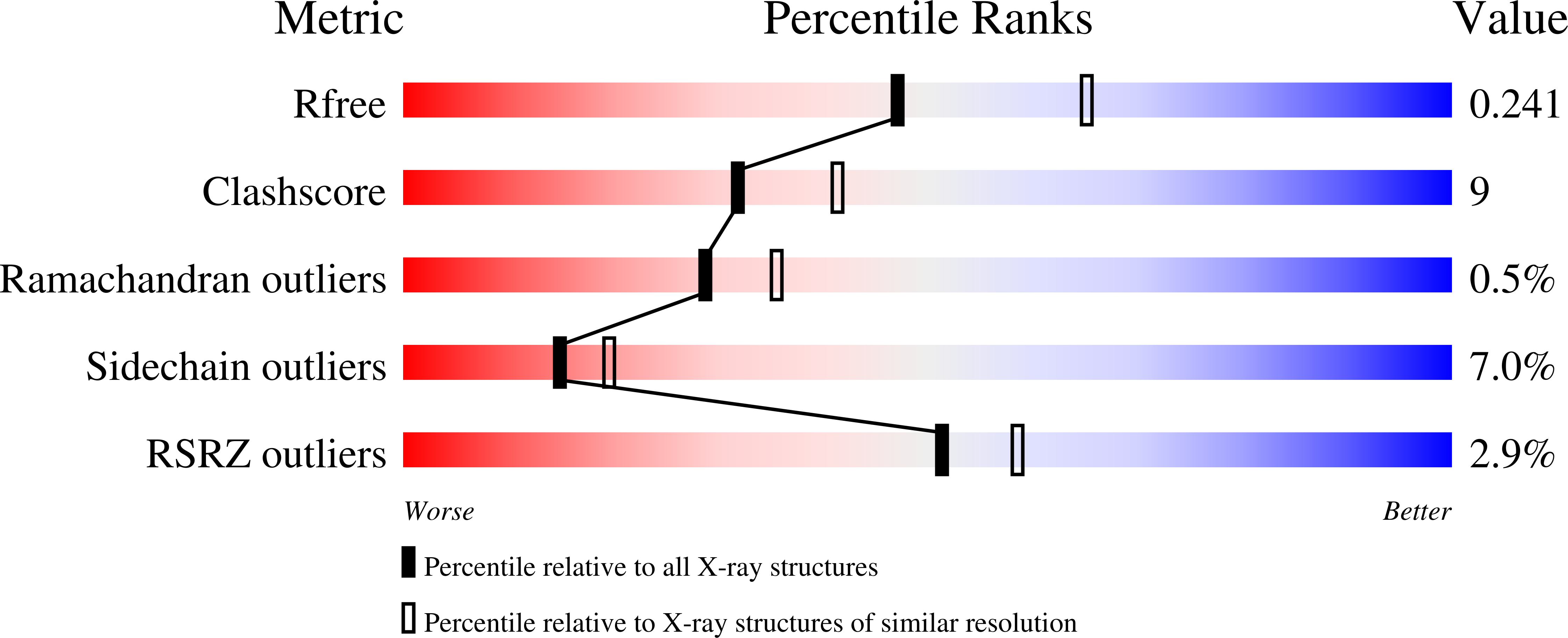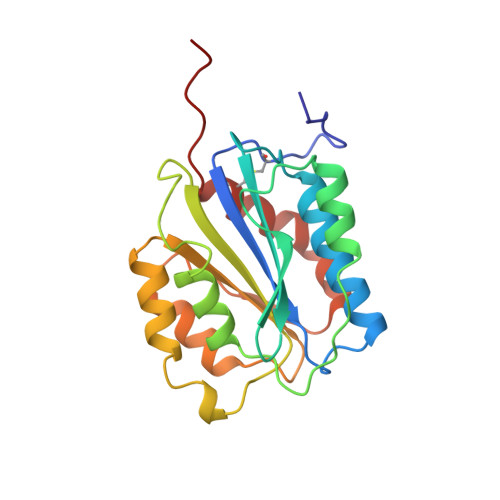Crystal structure of the von Willebrand Factor A1 domain and implications for the binding of platelet glycoprotein Ib.
Emsley, J., Cruz, M., Handin, R., Liddington, R.(1998) J Biol Chem 273: 10396-10401
- PubMed: 9553097
- DOI: https://doi.org/10.1074/jbc.273.17.10396
- Primary Citation of Related Structures:
1AUQ - PubMed Abstract:
von Willebrand Factor (vWF) is a multimeric protein that mediates platelet adhesion to exposed subendothelium at sites of vascular injury under conditions of high flow/shear. The A1 domain of vWF (vWF-A1) forms the principal binding site for platelet glycoprotein Ib (GpIb), an interaction that is tightly regulated. We report here the crystal structure of the vWF-A1 domain at 2.3-A resolution. As expected, the overall fold is similar to that of the vWF-A3 and integrin I domains. However, the structure also contains N- and C-terminal arms that wrap across the lower surface of the domain. Unlike the integrin I domains, vWF-A1 does not contain a metal ion-dependent adhesion site motif. Analysis of the available mutagenesis data suggests that the activator botrocetin binds to the right-hand face of the domain containing helices alpha5 and alpha6. Possible binding sites for GpIb are the front and upper surfaces of the domain. Natural mutations that lead to constitutive GpIb binding (von Willebrand type IIb disease) cluster in a different site, at the interface between the lower surface and the terminal arms, suggesting that they disrupt a regulatory region rather than forming part of the primary GpIb binding site. A possible pathway for propagating structural changes from the regulatory region to the ligand-binding surface is discussed.
Organizational Affiliation:
Department of Biochemistry, University of Leicester, Leicester LE1 7RH, United Kingdom.















